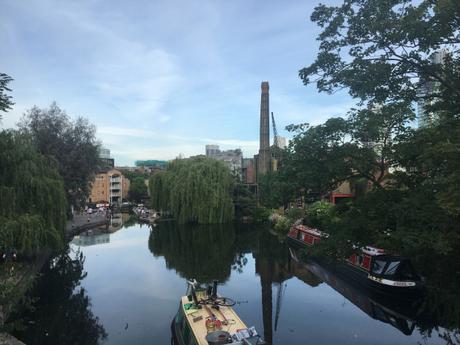
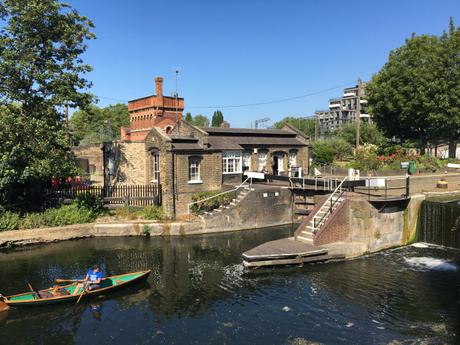
May was a record breaking month in the South of England; the hottest and sunniest since records began. Day after day, week after week, London basked under a baking sun, the sky a bright, fresh cornflower blue and the air filled with the sweet scent of drowsy flowers. I felt like I had been transported back in time to the long, lazy days of childhood summer holidays, lying on sun-scorched grass in my back garden, reading, aware that all the time in the world stretched before me and there was nowhere I needed to be other than here. Gorgeous weather has made lockdown really rather pleasurable; it’s far more bearable to know you can’t go anywhere exciting when you can enjoy endless afternoons tanning in a deckchair in the garden with a book, or lovely walks along the canal and through the parks in a deliciously balmy heat, able to take your time and enjoy the surroundings rather than being cowed under an umbrella or forced to walk briskly in order to stay warm. It has been a true gift to have such surprisingly lovely weather, and has boosted my mood enormously. It’s also encouraged me to go further afield than usual, and last weekend I completed a walk I’ve been meaning to do for some time; walking the length of the Regent’s Canal between King’s Cross, near where I live, to Regent’s Park.
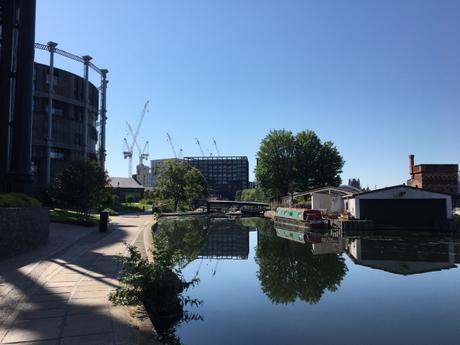
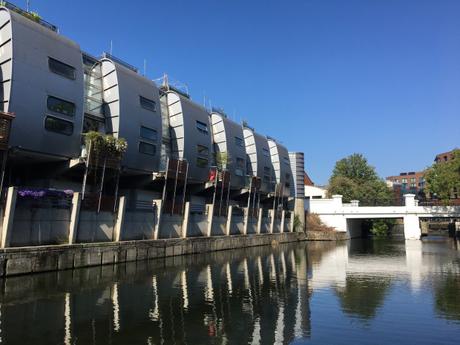
The work done to restore this canal over the last twenty or so years is nothing short of extraordinary, and is a real testament to the power of community campaigners, who were the driving force behind cleaning up what was, just a couple of decades ago, an unusable eyesore at risk of being filled in and lost forever. Now the canal, with its restored footpaths, parks and flower beds, and new waterside homes replacing run down old warehouses and factories, is an absolute treasure for so many Londoners. There are several canal networks in London that provide miles and miles of scenic walks and in non-lockdown times, there are plenty of lovely pubs, restaurants and cafes along the route, so that you can enjoy a waterside meal or drink at leisure, and feel a million miles away from the city. I always recommend a canal walk to friends who are visiting London; it’s not a common feature of travel guides to the city, but if you want to get a feel for what London is really like to live in, and understand more about its history and development from a series of rural villages to heaving metropolis, then the canal is the place to be.
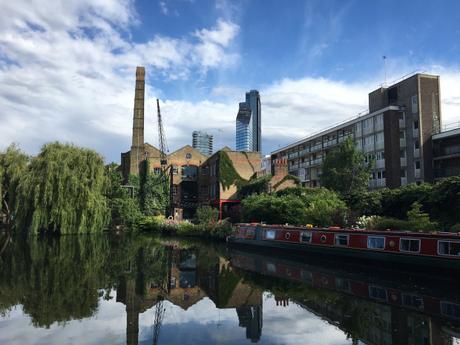
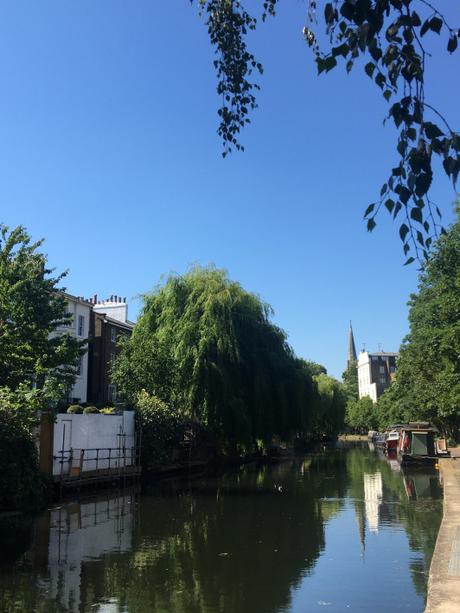
King’s Cross has become unrecognisable over the last decade; as a child, I remember it being a no-go area, as London’s red light district, and certainly no-one would willingly hang around the area after dark. It was sleazy, grimy, run-down – a real stain on London’s reputation. But a huge regeneration programme has taken place here, and central to that has been the restoration of the canal. It is now a bustling, beautiful waterside neighbourhood, filled with new homes and offices, art studios and performance spaces, and restaurants, shops, bars and cafes, clustered around the myriad waterways that used to bring coal and other goods to King’s Cross Station. Old coal stores and other warehouses have been imaginatively repurposed, and it feels very modern and sleek, though if you look carefully, you can imagine a little of what it used to be like in the nineteenth century. Taking the canal walkway around the edge of Granary Square, the center of the new development, you find yourself walking past the old loading bays to the coal warehouses, the enormous water-side openings into the buildings behind you now bricked in. Ahead is the lock to manage the entrance and exit of the loading and unloading boats; still beside it is the beautiful little lock keeper’s cottage, and a pretty community-tended garden. Keep walking and you find yourself amidst sleek new waterside flats jostling alongside huge old warehouse buildings as you wend your way through Camden Town, but moving further along the canal into the smarter neighbourhood of Primrose Hill, the large Georgian and Victorian houses backing onto the water offer a glimpse of the suburban idyll nineteenth century city workers created here. I love seeing all of the lovely stained glass windows, fancy wrought iron verandahs, and pretty gardens that run down to the canal, and there are many beautiful willow trees bending their boughs into the water and forming a softly verdant backdrop to what seems an impossibly pastoral scene. As I turned one corner, I saw the spire of a church peeking up between trees, and as I stood and gazed across the still waters of the canal, admiring the gaily painted boats moored there, I couldn’t help but wonder whether someone standing in the same spot one hundred and fifty years ago would have seen exactly the same scene as me.
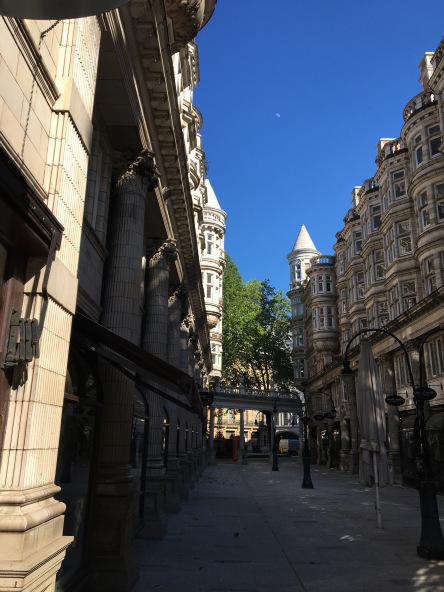
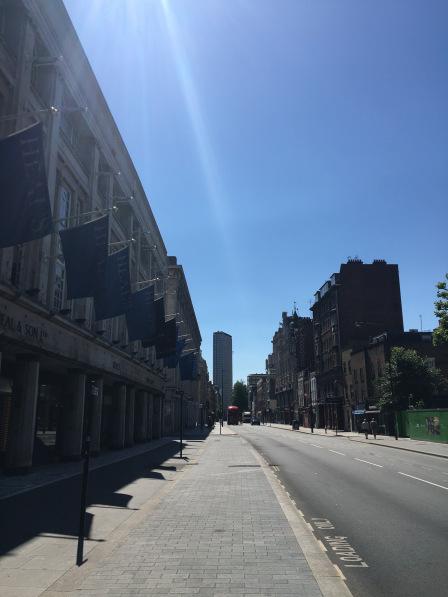
At the end of my walk, I exited the canal and wandered through leafy, meadow-like Regent’s Park, before coming out in Marylebone and wending my way home through Fitzrovia and Bloomsbury. This slice of London offers wonderful scenes for the Georgian architecture enthusiast, and Fitzroy Square has to be one of the most beautiful off-the-beaten path places to sit and while away a few minutes on an idle afternoon. Virginia Woolf once lived here; there is a plaque on her house, and I can only imagine she must have loved watching the world coming and going in the square below from her tall drawing room windows. I took Tottenham Court Road as the most expedient route back home. The emptiness of its hot and dusty pavements was striking, and gave me the opportunity to really admire its Victorian and Edwardian architecture, most of which was built to house furniture warehouses and shops, as this was where the middle classes bought their furniture in the nineteenth and twentieth centuries, a tradition that continues to this day. Behind Tottenham Court Road lies Bloomsbury and the British Museum; I walked through leafy Bedford and Russell Squares, their gardens lavishly green with hardly anyone to enjoy them, took a detour past lovely Persephone Books on Lambs Conduit Street, sad I couldn’t pop in to buy a book, and then past Charles Dickens’ house on Doughty Street, before wending my way through the back streets to Clerkenwell, looking up with interest at my surroundings as I went. There is so much beauty and so much variety to enjoy in the jumble of London’s streets, and so many surprises you can stumble across when you take a street you don’t usually, or take the time to look at a building you normally just hurry past on your way to somewhere else. Even though there is nothing to ‘do’ at the moment, walking through London on an idle afternoon offers far more interest, education and beauty than many an exhibition I’ve seen in a gallery. How wonderful to not have to ‘do’ anything to enjoy what’s on my own doorstep!
